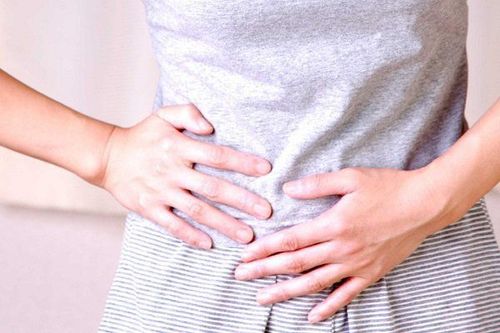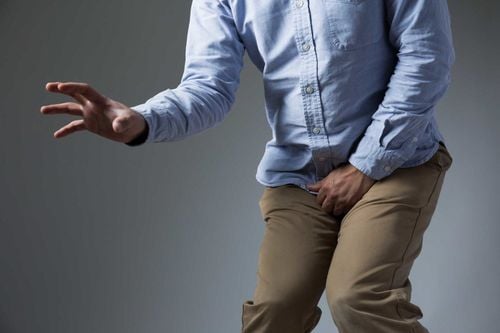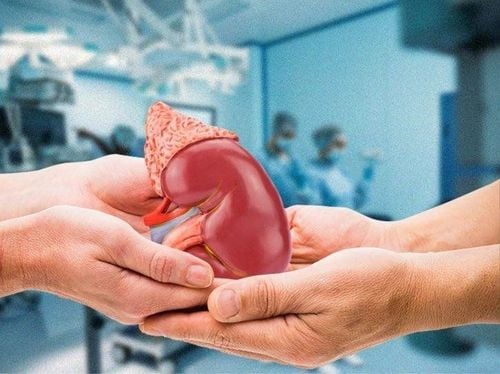This is an automatically translated article.
Urinating is a complex process that is closely related to the bladder's ability to function. Nerves in the bladder interact with the spinal cord and brain to receive signals to help the bladder contract when urine is full. To evaluate bladder function, doctors will use bladder manometry to help evaluate muscle or nerve abnormalities that affect the body's ability to urinate.1. What is bladder pressure measurement for?
Cystometry is a test used to measure the pressure and capacity inside the bladder, to see if the bladder is working properly. Bladder manometry is indicated when muscles or nerves make it difficult for the bladder to hold and empty urine.During manometry, the bladder is filled with water to measure its ability to hold and expel water. Medications may also be prescribed to see if the bladder is contracting or relaxing normally in response to the medication. A catheter placed in the bladder is used to measure pressure when the bladder is full, and a small pad or needle placed near the anus is used to measure muscle function in this area.
2. When should bladder pressure be measured?
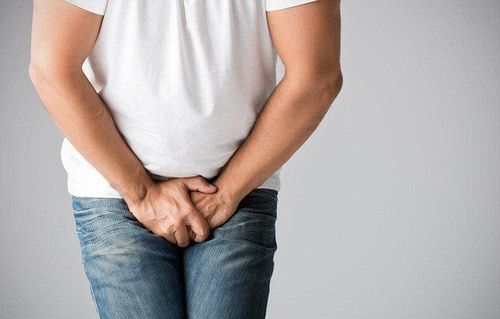
Đo áp lực bàng quang để tìm các nguyên nhân gây vấn đề ở bàng quang như ri nước tiểu không kiểm soát, dòng tiểu yếu,...
Find the cause of a problem with the bladder or the muscle that holds urine in the bladder (the bladder sphincter) causing the leakage of urine control or a sense of urgency or a weak stream of urine Find out how much urine the bladder can store and how much urine remains in the bladder after emptying Investigate bladder problems such as bladder problems Overactive bladder or reduced bladder function, the bladder is not able to completely empty urine (found in urinary tract infections, spinal cord injury, stroke, ...) Support for the treatment of symptoms in Urinary system Monitor bladder activity in people with progressive neurological disease such as multiple sclerosis
3. How to measure bladder pressure
Bladder manometry will be done in a urology clinic or hospital by a urologist or a gynecologist. How to perform a bladder manometry involves the following steps:At the beginning of the measurement, the patient will be asked to urinate which is connected to a machine called a uroflowmeter. The meter will measure the amount of urine passed and how long it takes as well as the time it takes to start the flow of urine, the number of times to start and stop the flow of urine, the presence of dribbling near the end of urination. will also be recorded Then, after the urethra is thoroughly cleaned, a catheter is gently inserted and moved into the bladder, any urine remaining in the bladder is drained and measured. , a catheter used to fill the bladder with sterile water, the catheter is attached to a device called a cystometer that measures how well the bladder can hold and the pressure in the bladder. The patient should report any sensations such as warmth, fullness of the bladder or the need to urinate to the doctor. The process is repeated and a contrast material may be used if an X-ray is taken during the manometry. bladder Another catheter may be placed into the rectum to measure the pressure in the abdomen when the bladder is full. A small pad or needle placed near the anus is used to measure muscle function in this area. Each time the bladder is filled, the patient will have to report the urge to urinate. The catheter will then drain the bladder or ask the patient to urinate. Finally, when all fluid is drained from the bladder, if no further testing is available, the catheter is removed.
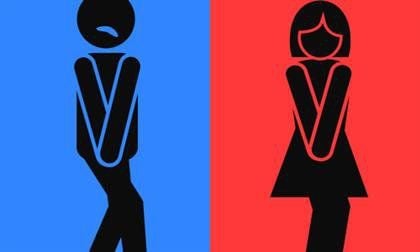
Kỹ thuật sẽ được thực hiện bởi bác sĩ chuyên khoa tiết niệu hoặc bác sĩ phụ khoa
4. Normal values of bladder manometry:
Bladder function will be assessed on the following parameters:Normal urine rate The amount of urine left in the bladder after urinating is less than 30 ml The first point you feel the urge to urinate is when The bladder volume is about 175 ml The point of immediate need to urinate is when the amount of fluid in the bladder is about 350-450 ml The maximum amount of fluid the bladder can hold is within the normal range: 400-500 ml Function tests function of the nerves controlling the bladder is normal Urine does not leak from the bladder during the examination Vinmec International General Hospital is a high quality medical facility in Vietnam with a team of qualified doctors and nurses. Highly qualified, well-trained, domestic and foreign, rich in experience.
A system of modern and advanced medical equipment, possessing many of the best machines in the world, helping to detect many difficult and dangerous diseases in a short time, supporting the diagnosis and treatment of doctors the most effective. The hospital space is designed according to 5-star hotel standards, giving patients comfort, friendliness and peace of mind.
To register for an examination at Vinmec International General Hospital, you can contact the nationwide Vinmec Health System Hotline, or register online HERE.
See more:
Cystitis: Causes, symptoms, diagnosis and treatment What is neurogenic bladder? Signs of end-stage bladder cancer Urinary tract infections: Causes, symptoms, diagnosis and treatment




